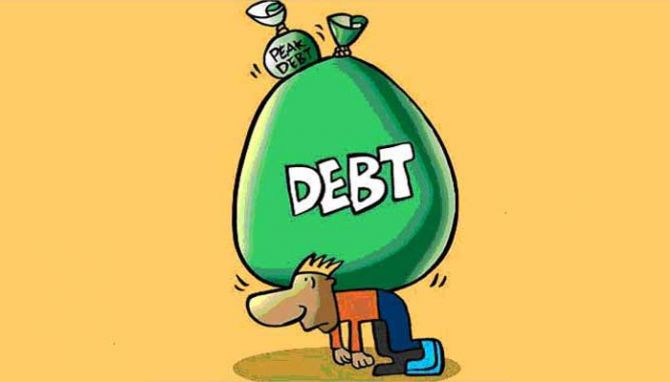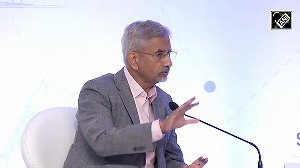"This will give confidence to the investors, and also help the company tide over rough times.'
"Clearly, the problem is that the assets, though good, are illiquid. However, the liabilities are immediate.'
"Pumping in some liquidity in the company will ensure that debt funds aren’t too concerned.'
Illustration: Uttam Ghosh/Rediff.com

Infrastructure Leasing & Financial Services’ (IL&FS) recent default on debt papers has spooked the market, and with other obligations coming up in the next few weeks, there are fears that there could be a contagion if the company continues to default.
Keki Mistry, bottom, left, vice-chairman, Housing Development Finance Corporation (HDFC), tells Joydeep Ghosh that debt fund investors could become risk-averse, leading to problems for other non-banking financial companies (NBFCs).
HDFC was one of the original promoters of IL&FS and still holds around 9 per cent stake in the company. Edited excerpts:
How serious is the IL&FS problem? Can it spread and hurt debt markets?
I do not know the size of the problem. But any large default by any borrower could result in debt fund investors becoming risk averse.
And if they start withdrawing from mutual funds, there could be redemption pressure on fund houses.
 They would be forced to sell papers at a discount to meet liabilities.
They would be forced to sell papers at a discount to meet liabilities.
Consequently, fund houses would be unwilling to renew and invest in commercial papers.
If this risk aversion sets in, then it is definitely a worry.
However, unless there is panic among debt investors, there will be no major problem.
Defaults have happened in the past and may happen in the future also.
Is asset monetisation a solution?
As far as I can see, the main problem seems to be long-term assets vis-a-vis short-term liabilities.
When a lot of long-term projects are financed with short-term liabilities, it can become a liquidity issue for the company.
The company has assets, and these must be good assets. But it will need time to sell them.
In the interim, the liquidity crunch has to be resolved.
Is this problem widespread among NBFCs?
A lot of NBFCs have long-term assets that have been financed through short-term liabilities.
So, the worry is that if there is one big default, others who are not defaulting will also bear the brunt of the market mood.
Are investors in NBFCs worried?
I don’t think so. As I have said, these things have happened in the past, and are quite likely to happen again.
But it does not take too long for the mood to change.
Like we saw on Friday, there was a sudden change in market mood and many NBFC stocks were hammered down on news that a fund house had sold papers of an NBFC.
What is the way out for IL&FS?
The only way out, I believe, is that someone like Life Insurance Corporation of India - the biggest shareholder in the company - bails it out by pumping in the short-term liquidity.
This will give confidence to the investors, and also help the company tide over rough times.
Clearly, the problem is that the assets, though good, are illiquid. However, the liabilities are immediate.
Pumping in some liquidity in the company will ensure that debt funds aren’t too concerned.







